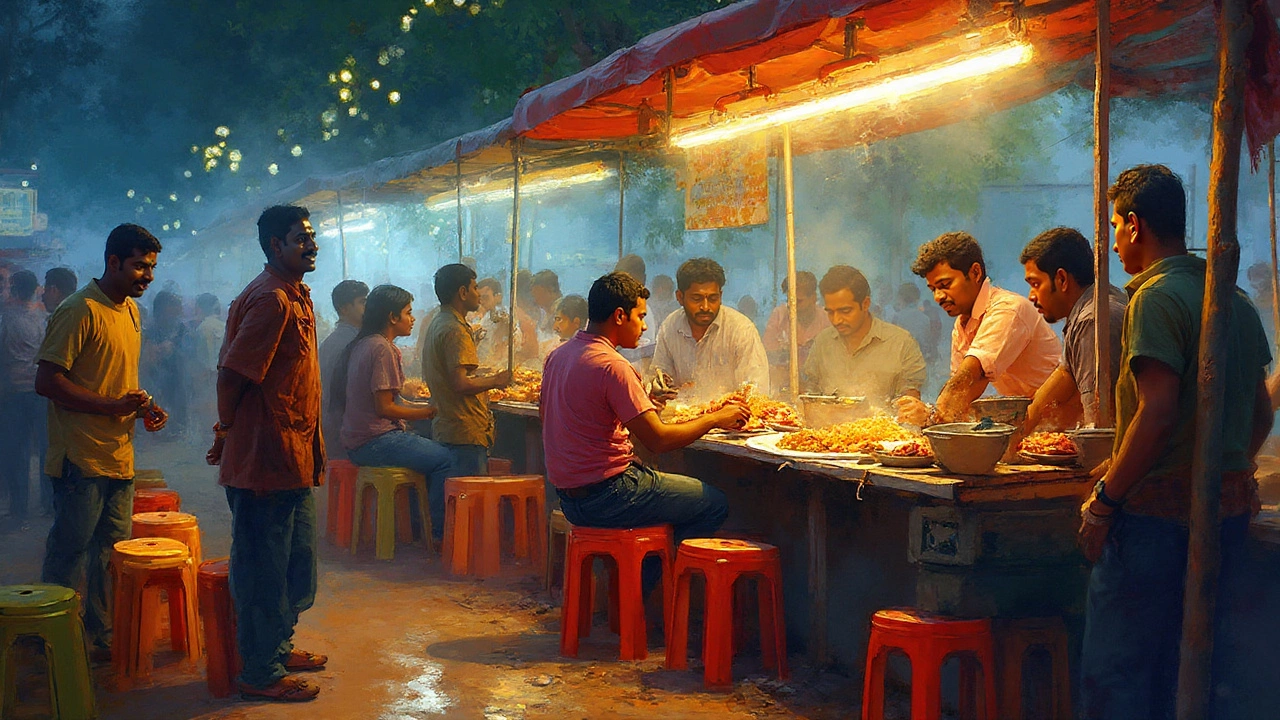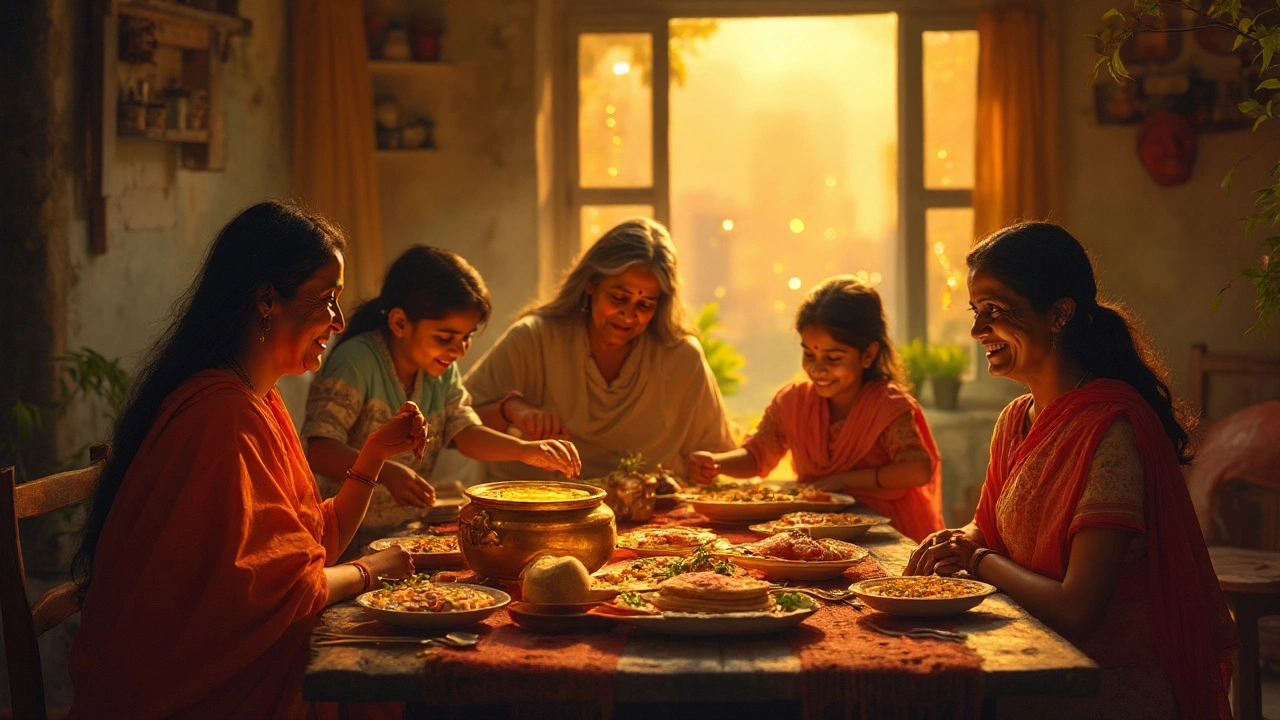If you’ve ever been baffled by how late the lights stay on in Indian homes, there’s a good reason for it: dinner time in India is a whole different world. Forget those “eat by 6 pm” rules you’ve heard in the West. In India, dinner can be fashionably late or surprisingly casual, and timing is less about the clock, more about family rhythms, work schedules, and a pinch of regional flair. The whole notion of a universal dinner hour? Doesn’t really fly. It’s a country that thrives on organized chaos, and dinner time is no different.
How Late Is “Dinner Time” in Indian Households?
Let’s start with the big question. When do people in India actually sit down for dinner? Here’s the thing: there’s no single answer, but ask anyone who’s lived or traveled there, and you’ll hear the same theme — dinner is usually late, often much later than Western norms. For most urban families, dinner starts anywhere from 8:00 to 10:00 pm. In fact, if you show up at 7 pm hoping for dinner, you’ll probably just be offered chai and a chat.
Older generations and rural areas may eat a bit sooner, sometimes around 7:30 pm, especially if agricultural routines dictate early rising. But in big cities like Mumbai, Delhi, or Bangalore, where traffic jams eat up hours and workdays stretch into the evening, nobody is shocked by dinner starting at 9:30 or even 10 at night. It’s really common to see kids finishing homework at 8:30 and families assembling at the table just before bedtime.
This isn’t just anecdotal — check out restaurants in Indian cities. Most don’t start to fill until after 8:30 pm, and queues at 10:00 pm are not unusual. Fast food outlets and family restaurants often stay busy until midnight. Even weddings and parties are proof: dinner is almost always served late, often after all the socializing and dancing are done. If you’re invited to an Indian wedding, don’t expect to finish your meal before 11 pm.
| Region/Setting | Common Dinner Time |
|---|---|
| Metropolitan Cities (Urban) | 8:30 pm – 10:30 pm |
| Smaller Towns/Rural | 7:30 pm – 9:00 pm |
| Special Occasions | After 10:00 pm |
Younger professionals, especially in IT hubs like Bengaluru or Hyderabad, may eat dinner even later. It’s not unusual for techies to grab their main meal after 10 pm, thanks to late shifts and global meetings. Of course, shift workers, nurses, and call center staff can have dinner anytime between sundown and sunrise! So if you’re planning a meal with Indian friends or visiting India, be prepared for a late feast. That “early bird special” just doesn’t exist here.
Why Is Dinner So Late? What Shapes Indian Mealtime?
This isn’t just a quirky habit; there are some good reasons India’s dinner clock runs slow. The first is the way Indian life is structured. Many people work long hours, leaving home early and coming back late due to lengthy commutes in packed cities. Life slows down only after dark. Against this background, dinner becomes the first chance for the family to catch up and share stories — so it’s not rushed.
The other big reason: three meal culture. Indians typically eat a hearty breakfast (often called “nashta”), a filling lunch (sometimes with rice, dal, and veggies), and then a late dinner. But here’s the twist — many people fit in a robust “chai and snacks” session around 5 or 6 pm, which keeps hunger at bay till dinner. This snack — think samosas, pakoras, or a bowl of sprouted salad — helps families cope with long gaps until the main meal.
And then, there’s climate. Nights are cooler, especially in summer, letting people enjoy a more relaxed, family-centric dinner. In much of North India, the blazing heat means people avoid heavy meals during daylight hours. They reserve their appetites for when things cool off. In the South, families might wrap dinner up earlier to beat the humidity. But, even there, it’s rarely before 7:30 pm.
The timing often shifts for religious and cultural reasons too. During Ramadan, for example, Muslim families break their fast at sunset, while on Hindu fasting days, dinner may be light and eaten before sundown. Festivals bring their own eating rhythms: Diwali, Eid, Navratri, or Pongal all have unique mealtime traditions.
Bottom line: Indian dinner time is shaped by more than the clock. It’s about warmth, togetherness, and a long, winding journey to the table — not a dash for calories. Work, weather, tradition, and snacks all tip the clock towards a later meal.

Regional Variations: North, South, East, and West
If you think there’s one fixed “Indian Dinner Time,” think again. India is a patchwork of cultures, cuisines, and eating rhythms. In the north — places like Punjab, Delhi, and Uttar Pradesh — big, boisterous families often gather late, sometimes only sitting down for Indian dinner time after catching up with relatives or watching TV dramas together. North Indian dinners typically kick off between 8:30 and 10:00 pm.
Southern India tells a slightly different story. In states like Tamil Nadu, Kerala, and Andhra Pradesh, dinner is often eaten a bit earlier, sometimes around 7:30 or 8:00 pm, especially in rural areas where early mornings are common. That said, urban residents often match those north Indian late-night hours as work keeps them away from home until late.
Eastern India (think Kolkata, Assam, and Odisha) has its own rhythm. Fish curry and rice might be served up a little earlier, from 8:00 to 9:00 pm, but in city life, even here, dinner can drift closer to 10:00 pm. In the western states, such as Gujarat and Maharashtra, sharing a leisurely meal at 9 pm is normal, with social gatherings stretching long into the night.
- North India: 8:30–10:00 pm, often after socializing
- South India: 7:30–9:00 pm in rural areas, 8:30–10:30 pm in cities
- East India: 8:00–9:30 pm, often with light rice-based foods
- West India: 8:30–10:00 pm, with family and guests
Don’t forget the impact of community and tradition: Jain families might eat before sunset as part of their faith, while late-night socializing is common in cosmopolitan circles. No single answer fits all, but patterns emerge if you pay attention to geography, weather, and work life. If you’re visiting, it’s always polite to ask your host when dinner is expected — especially if you’re not used to such late meals.
What’s for Dinner? Typical Dishes and Tips for Visiting
So, what’s actually on the dinner plate in Indian homes? That’s where things get even more interesting. In the north, dinner may feature roti (flatbread), sabzi (vegetable curry), dal (lentils), and a little rice — nothing too rich unless it’s a party or weekend treat. In the south, dosa or rice with sambar (a tangy lentil stew) and simple vegetable curries are common fare. In urban homes, it’s not rare to find sandwiches, noodles, or even pasta. Modern families sometimes mix Indian and international dishes based on time, taste, and what’s in the fridge.
Most families still eat together, sharing food from common dishes rather than plating everything separately. Chicken, fish, or eggs could appear, but for large parts of India, dinner is purely vegetarian — especially in traditional homes.
If you’re visiting, don’t be shy about asking for a lighter meal if a late dinner doesn’t suit you. Most Indian hosts are happy to adapt. A handy tip: keep an open mind and, if possible, leave space for chai and snacks during the evening — it might become your new favorite pick-me-up. Also, pace yourself and expect multiple courses or rounds of food at social gatherings. Second (or even third) helpings are a love language in Indian homes.
- Say yes to snacks at 6 pm — they’ll help you last till dinner.
- Stay hydrated — Indian food can run spicy and late meals may need a soothing drink.
- Expect variety: rice, dal, sabzi, roti, sometimes non-veg or fusion dishes.
- Go with the flow: mealtime is all about togetherness, not the clock.
- If you’re jetlagged, light supper or an early dinner is fine; just let your host know.
Here’s one last twist: India’s growing health awareness is nudging some city dwellers to eat dinner earlier, especially during work-from-home stretches or wellness challenges. Even so, the national average is still later than most Western countries. You can blame those delicious snacks, busy lives, and the unbeatable habit of making dinner a family event.
